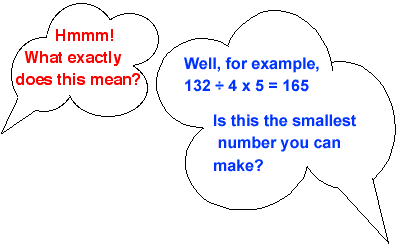Copyright © University of Cambridge. All rights reserved.
'1, 2, 3, 4, 5' printed from https://nrich.maths.org/
Show menu
Why do this problem?
This short problem could be used to start a lesson or fill a gap made by those who finish early. It will promote thinking about numbers and offers opportunities to practise multiplication and division.Key questions
What results can you find obeying these rules?
Why don't you put all your answers in order?
What things do you notice about your different results?
Why do you not get any divisions by $5$?
Does it help to multiply by $1$? If not, why not?
